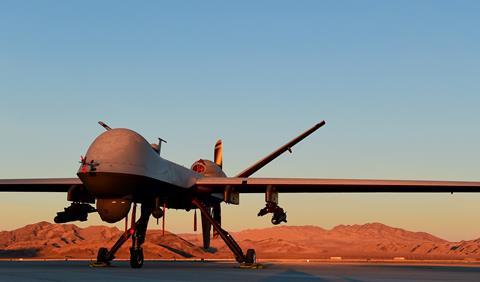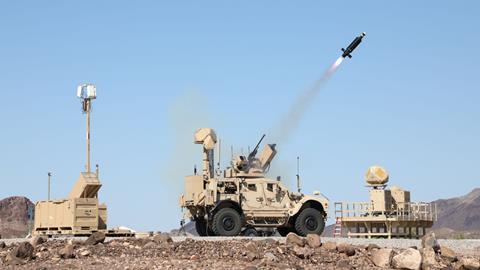The lethally-armed uncrewed aerial vehicle (UAV) that struck an American base in Jordan was reportedly able to breach the facility’s air defences by flying behind a US aircraft preparing to land at the site.
The 28 January air strike by an Iranian-backed militia group killed three American personnel and injured dozens more. Washington has confirmed the casualties and is said to be weighing retaliatory options.
Now, unconfirmed information from an anonymous government source indicates a novel tactic was used to evade US air defences at the base, which is known as Tower 22.
An unnamed official within the US Department of Defense (DoD) says the drone flown by an Iranian proxy group was able to approach the facility by trailing an American UAV that was returning to the base on the Jordanian-Syrian border.
The proximity of the two aircraft apparently created enough confusion that defensive measures were not activated. The development was first reported by the Wall Street Journal on 29 January.

US bases employ a variety of air defence measures, tailored for the local threat environment.
Facilities in the Middle East typically use a short-range system called the Raytheon Counter-Rocket, Artillery, Mortar (C-RAM) to defend against rocket and UAV attacks.
The C-RAM is a land-based version of the radar-guided Phalanx cannon that defends US Navy ships. The M61 Vulcan cannon used on both the Phalanx and C-RAM systems is also the same family of gun found on the Lockheed Martin F-22 and F-16 and Boeing F-15 fighters.
The US Army has also begun deploying the Raytheon Coyote UAV interceptor. The tube-launched, expendable UAV is designed to identify, track and destroy threatening drones, according to Raytheon.
The army last December announced a major acquisition of the Coyote system, with plans to purchase some 6,700 interceptors. Defence start-up Anduril is offering a competing platform, which it calls the Roadrunner.
It is unclear what protective measures were in place at Tower 22 at the time of the 28 January attack.
However, a Coyote shot successfully defeated another enemy UAV in a separate incident at a nearby base in Syria, according to an unnamed DoD source cited by Politico on 29 January.
That attack reportedly took place just 90min after the Tower 22 strike.
The Pentagon has not officially confirmed any details surrounding the attack, and says it will not discuss specific countermeasures being taken to prevent similar strikes in the future.
“We are still assessing what happened and how a one-way attack drone was able to impact the facility,” deputy press secretary Sabrina Singh says. She adds that the USA “will not tolerate” the continued attacks on American forces.
One-way UAVs, commonly known as kamikaze drones or loitering munitions, have been produced in large numbers by Iran.

Tehran has supplied Russia with large numbers of Shahed-136 kamikaze drones and has provided other sophisticated weaponry to proxy groups across the Middle East, including ballistic missiles.
Iran-backed Houthi militants in Yemen have launched dozens of such missiles and UAVs at both commercial and military ships in the Red Sea in recent months. The US Navy and UK Royal Navy have successfully defeated most of these attacks, using a combination of ship-based air defences and fighter aircraft.
Washington has thus far stopped short of directly blaming Tehran for the American casualties in Jordan.
The Biden Administration is reportedly weighing options for a retaliatory strike, including against Iran’s proxy groups in Iraq and Syria and targets within Iran itself.
“We will hold all those responsible to account at a time and in a manner our choosing,” Biden said on 29 January, without identifying a perpetrator of the attack.
Tehran is denying any connection to lethal manoeuvre against American forces, with the Iranian foreign ministry on 29 January calling any allegations of Iranian involvement “baseless accusations”.
Iran has vowed to take revenge on the USA over the 2020 assassination of Major General Kassem Soleimani – a senior officer in Iran’s Islamic Revolutionary Guard Corps – under the administration of President Donald Trump.


























